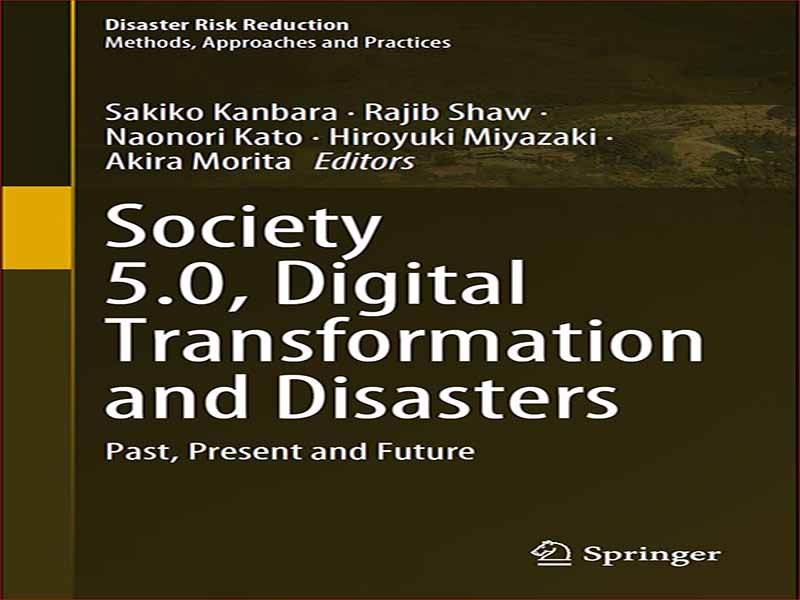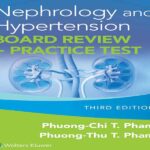- عنوان: Society 5.0, Digital Transformation and Disasters
- نویسنده: Sakiko Kanbara
- حوزه: عصر دیجیتال
- سال انتشار: 2022
- تعداد صفحه: 224
- زبان اصلی: انگلیسی
- نوع فایل: pdf
- حجم فایل: 4.85 مگابایت
هدف ژاپن ایجاد یک جامعه پایدار برای امنیت و رفاه انسانی از طریق سیستم فیزیکی سایبری «جامعه 5.0» است. نیپون کیدانرن قصد دارد از طریق ایجاد Society 5.0 مشارکت را برای تحقق فعالانه اهداف توسعه پایدار سازمان ملل متحد برای پایان دادن به فقر، محافظت از سیاره و تضمین رفاه برای همه تقویت کند. Society 5.0 در مورد استفاده از سیستم فیزیکی سایبری است که ترکیبی از سایبری و فیزیکی برای به حداکثر رساندن استفاده از داده های هر دو است. تحول دیجیتال مفهومی است که به تلاش برای تغییر سیستم های اجتماعی و فرهنگ سازمانی از طریق توسعه محصولات و خدمات جدید، مدل های تجاری جدید و اصلاحات برای ایجاد ارزش جدید از طریق استفاده از فناوری دیجیتال اشاره دارد. توجه به این نکته ضروری است که به خودی خود یک هدف نیست. در راستای بحث اخیر SDGs، توجه به این نکته مهم است که مفهوم امنیت انسانی بر مدل توسعه و مدل علوم اجتماعی متمرکز است، زیرا مسیری برای سلامت در فرد، جامعه و سازمان است. سطوح از طریق ادغام مداخلات و نحوه برخورد رویکردهای امنیت انسانی به ارتباط بین علل مختلف تهدیدهای سلامتی. با بررسی دقیق ارتباطات بین هر یک از اهداف SDG 3 و SDGs 1، 11 و 16، که در اهداف چارچوب سندای برای کاهش بلایا هستند، می توان همپوشانی بین کاهش بلایا با محوریت مردم را درک کرد. و امنیت و رفاه انسان. این کتاب همپوشانی بین کاهش بلایا با محوریت مردم و امنیت و رفاه انسانی و نقشی که بخش کاهش بلایا باید ایفا کند را مورد بحث قرار می دهد. این کتاب به منظور ارائه پیشنویس میان رشتهای جدید برای پیشگیری از بلایا با محوریت امنیت و رفاه انسانی در افراد و جوامع، بر اساس تحقیقات و بحثهای دانشگاهی، از جمله بهداشت عمومی، مدیریت عمومی، و قانون اطلاعات نوشته شده است. ، پیرامون پرستاری با فلسفه امنیت انسانی. به طور خاص، ما می خواهیم با خلاصه کردن فعالیت های تحقیقاتی عملی میان رشته ای با تمرکز بر “انسان” در مکان های فاجعه بررسی کنیم که یک جامعه مردم محور، فناوری محور و ایمن چیست. این کتاب برای دانشجویان، محققان، دانشگاهها، سیاستگذاران و دست اندرکاران توسعه در زمینههای کاهش خطر بلایا، برنامهریزی توسعه، بهداشت عمومی، مدیریت منابع آب، برنامهریزی شهری و مدیریت بلایا به ویژه در منطقه آسیا و اقیانوسیه در نظر گرفته شده است. . اگر خوانندگان این کتاب را مفید و مرتبط بدانند، خوشحال خواهیم شد.
Japan aims to build a sustainable society for human security and well-being through the “Society 5.0” cyber-physical system. Through the creation of Society 5.0, Nippon Keidanren intends to strengthen the partnership to actively realize the UN Sustainable Development Goals of ending poverty, protecting the planet, and ensuring prosperity for all.
Society 5.0 is about leveraging the cyber-physical system, which combines the cyber and physical to maximize the use of data from both. Digital transformation is a concept that refers to efforts to transform social systems and organizational cultures through the development of new products and services, new business models, and reforms to create new value through the use of digital technology. It is important to note that it is not an end in itself.
In line with the recent discussion of the SDGs, it is important to note that the concept of human security is centered on the development model and the social science model, as it is a pathway to health at the individual, community, and orga-nizational levels through the integration of interventions and how human security approaches address the linkages between the various causes of health threats. By examining in detail the connections between each of the targets of SDG 3 and SDGs 1, 11, and 16, which are central to the targets of the Sendai Framework for Disaster Reduction, it is possible to understand the overlap between people-centered disaster reduction and human security and well-being. This book discusses the overlap between people-centered disaster reduction and human security and well-being and the role that the disaster reduction section should play.
This book was written to propose a new interdisciplinary draft of disaster preven-tion that is oriented toward human security and well-being in individuals and commu-nities, based on research and discussion by academia, including public health, public administration, and information law, surrounding nursing with the philosophy of human security. In particular, we would like to examine what a people-centered, technology-driven, and secure society is by summarizing interdisciplinary practical research activities focusing on “humans” at disaster sites.
This book is intended for students, researchers, academia, policy-makers, and development practitioners in the fields of disaster risk reduction, development planning, public health, water resource management, urban planning, and disaster management, especially in the Asia-Pacific region. We will be happy if the readers find this book useful and relevant.
این کتاب را میتوانید بصورت رایگان از لینک زیر دانلود نمایید.




































نظرات کاربران